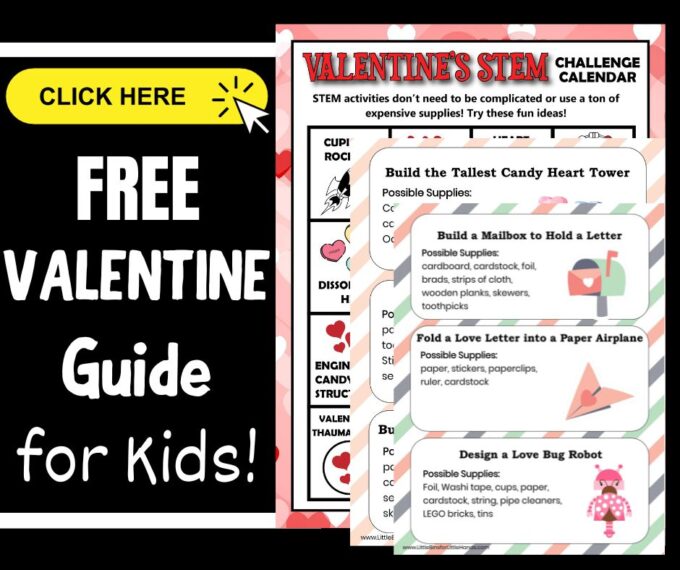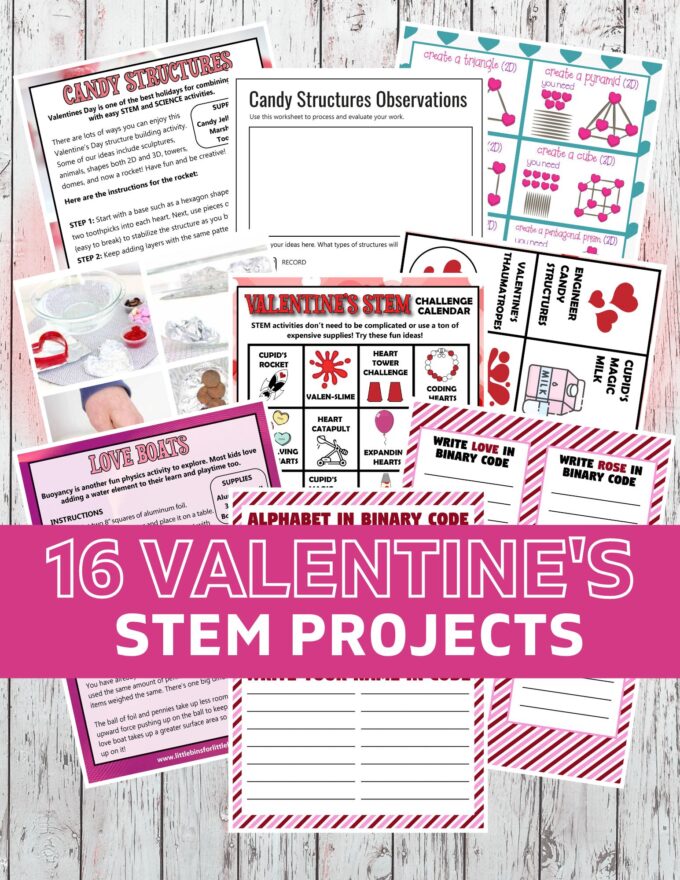To show you just how simple science can be for the holidays or special occasion days like Valentine’s Day, I took our classic baking soda and vinegar balloon experiment and gave it a theme for this month. We turned it into a Valentine balloon science experiment with just a little bit of creativity.
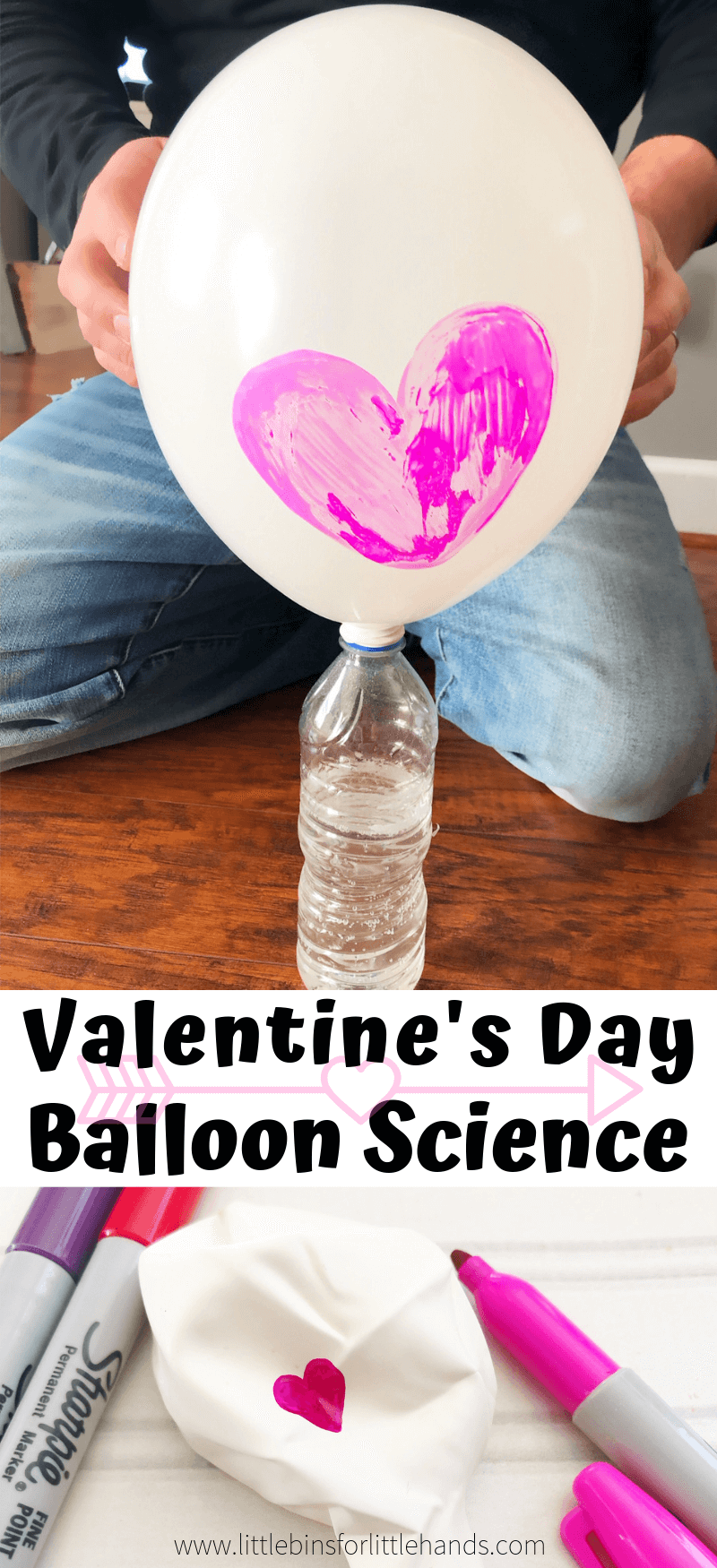
Explore Science For Valentine’s Day
Simple science can be explored all year round with fun themes to make it new and engaging each time! Even something as simple as adding a cookie cutter creates a sense of excitement for young kids, and Valentine science activities are perfect for February indoor activities!
Kids are curious creatures and sharing fun and simple science activities at home or in the classroom is just another way to spark the fun in learning. We prefer to keep our science playful too!
Find out how to set up this simple Valentine’s Day science experiment below.
What Is Chemistry?
Let’s keep it basic for our younger or junior scientists! Chemistry is all about the way different materials are put together, and how they are made up including atoms and molecules. It’s also how these materials act under different conditions. Chemistry is often a base for physics so you will see overlap!
What might you experiment with in chemistry? Classically we think of a mad scientist and lots of bubbling beakers, and yes there is a reaction between bases and acids to enjoy! Also, chemistry involves matter, changes, solutions, and the list goes on and on.
We will be exploring simple chemistry you can do at home or in the classroom that isn’t too crazy, but is still lots of fun for kids! You can check out some more chemistry activities here. Check out the video! You can never recreate the same look twice.
Helpful Science Resources To Get You Started
Here are a few resources that will help you introduce science more effectively to your kiddos or students and feel confident yourself when presenting materials. You’ll find helpful free printables throughout.
- Best Science Practices (as it relates to the scientific method)
- Science Vocabulary
- 8 Science Books for Kids
- All About Scientists
- Free Science Worksheets
- Science Supplies List
- Science Tools for Kids
- Join us in the Club
Extend The Experiment
My son suggested we try different amounts of baking soda in our Valentine balloon science experiment to see what would happen. Always encourage your kids to ask questions and wonder about what will happen if…
This is a great way to encourage inquiry, observation skills, and critical thinking skills. You can read more about teaching the scientific method to young kids here.
You can measure each balloon and record the results if you are blowing up multiple balloons and testing multiple measurements. Remember in a good science experiment project, you only want to change one variable at a time. Learn more about choosing variables here.
- change up the amount of baking soda or vinegar
- switch out the vinegar for lemon juice
- compare with baking powder and water (also a chemical reaction that produces carbon dioxide)
Valentine’s Day Balloon Experiment
Kids are always amazed by this super simple science experiment, and it’s also fun to draw designs on the balloon. Make it a STEAM activity. STEM + Art = STEAM. What’s even more interesting is if you blow up another balloon with your own air and compare the two!
Supplies:
- Baking Soda
- Vinegar
- Empty Water Bottles
- Balloons
- Measuring Spoons
- Markers
- Funnel {optional but helpful)

Instructions:
TIP: Go ahead and use a sharpie to draw hearts or arrows or other fun Valentine’s Day theme pictures on your balloons before filling them with baking soda.

STEP 1. Blow up the balloon a bit to stretch it out some. Then use the funnel and teaspoon to add baking soda to the balloon. We started with 2 teaspoons and added a teaspoon for each balloon.
STEP 2. Fill the bottle halfway with vinegar.
STEP 3. When your balloons are all made attach to containers making sure you have a good seal!
Carefully attach the balloon to the bottle opening without letting any of the baking soda fall into the bottle ahead of time.

STEP 4. Lift up the balloon to dump baking soda into the container of vinegar. Watch the balloon fill up.
TIP: To get the most gas out of it, we swirled around the container to get it all going!
There you have it! A balloon is blown up with a chemical reaction. Makes a great self-inflating balloon science project for kids including a great simple science fair project idea!
How Does It Work?
The science, behind this balloon baking soda experiment, is the chemical reaction between the base {baking soda} and the acid {vinegar}. When the two ingredients mix together the balloon baking soda experiment gets it’s lift! Learn more about acids and bases here.
That lift is the gas produced from the two ingredients is carbon dioxide or CO2. As the gas tries to leave the plastic container, it goes up into the balloon because of the tight seal you have created. Because the gas has nowhere to go and is pushing against the balloon it inflates it!
Don’t have vinegar? Try a citric acid like lemon juice and check out our citrus experiments here. Turn it into an experiment!

More Experiments You Can Do With Balloons
You can also try other simple science activities with balloons including:
- Building a balloon-powered car!
- Setting up a balloon rocket!
- Static Electricity and Jumping Hearts
- Electric Cornstarch Experiment
- Screaming Balloon Experiment
More Fun Valentine’s Day Science Experiments
You can find all our Valentine’s Day science experiments here, including…
- Candy Heart Oobleck
- Heart Lava Lamp
- Valentines Skittles Experiment
- Dissolving Candy Heart Science
- Grow Crystal Hearts
- Water Displacement Experiment
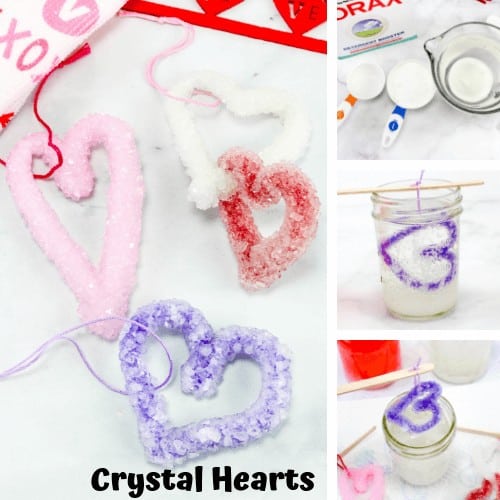
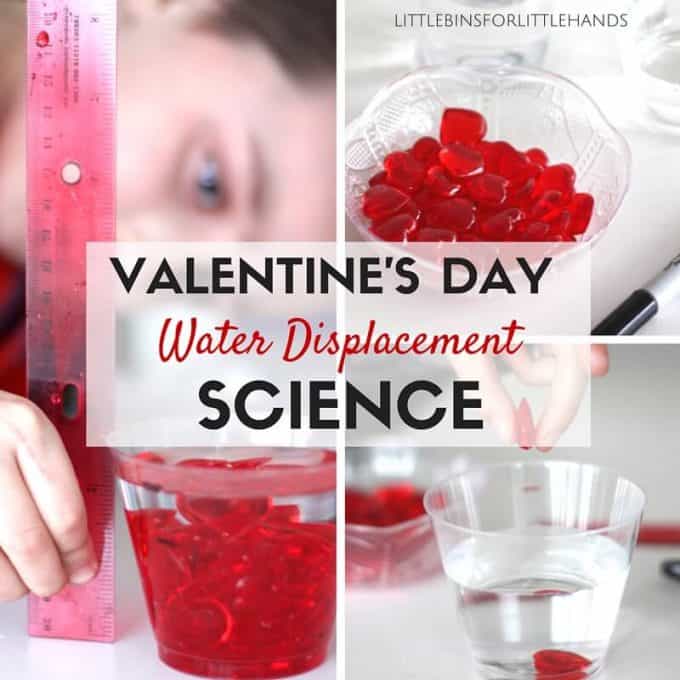

Printable Valentine STEM Project Pack
Countdown to Valentine’s Day with science and STEM! Pack includes complete instructions, templates, and images for 20+ activities. Bonus: printable science Valentine’s Day cards!


